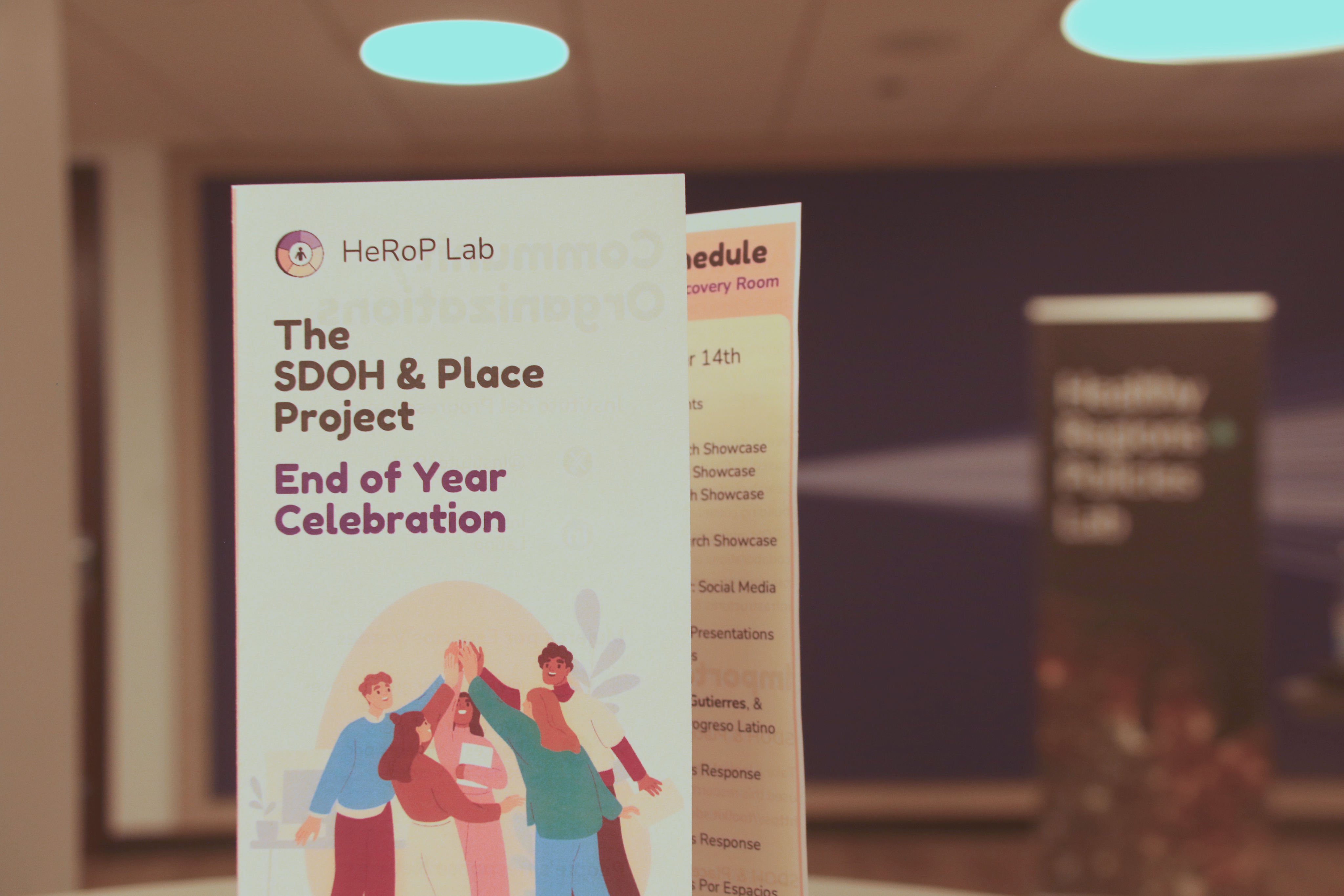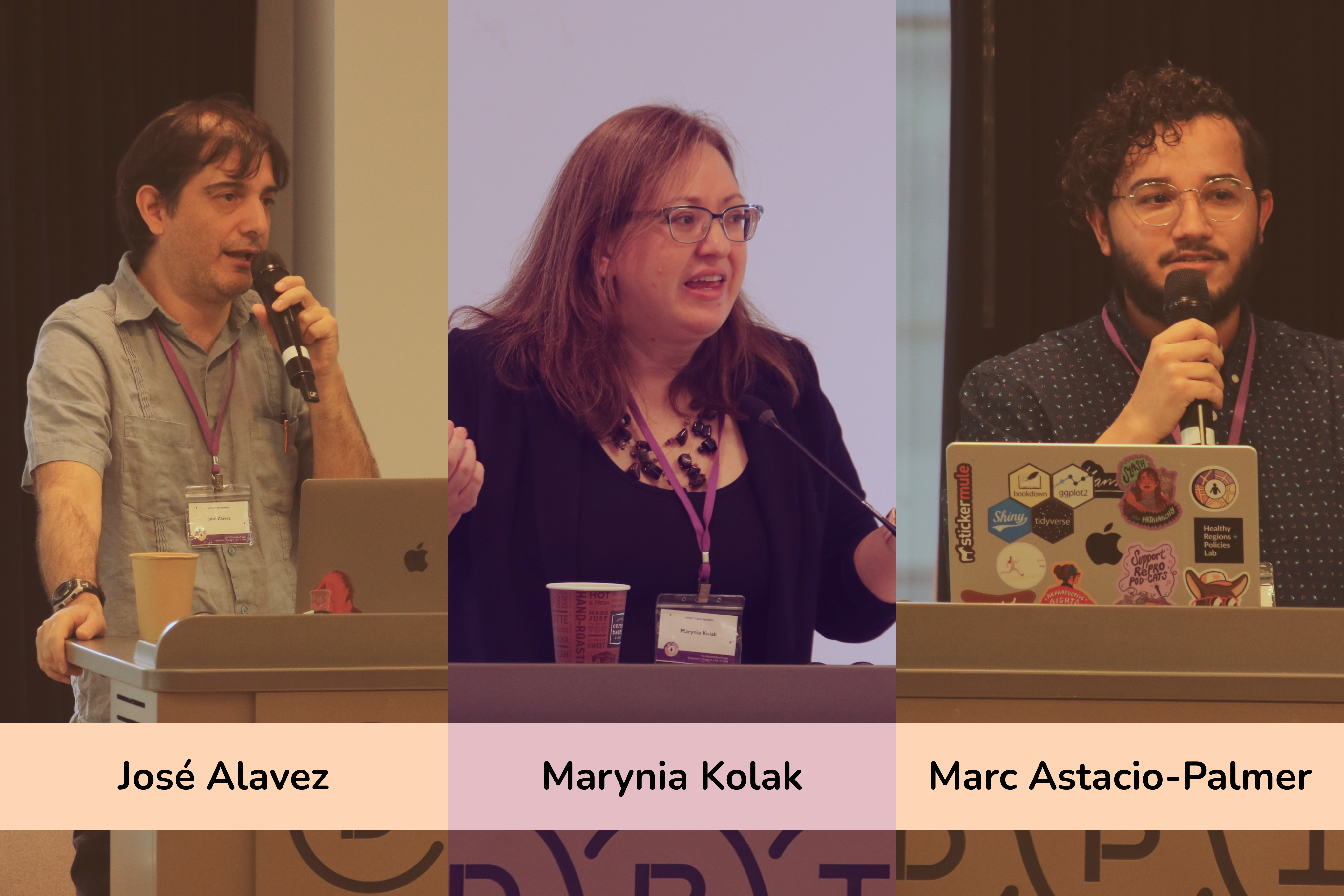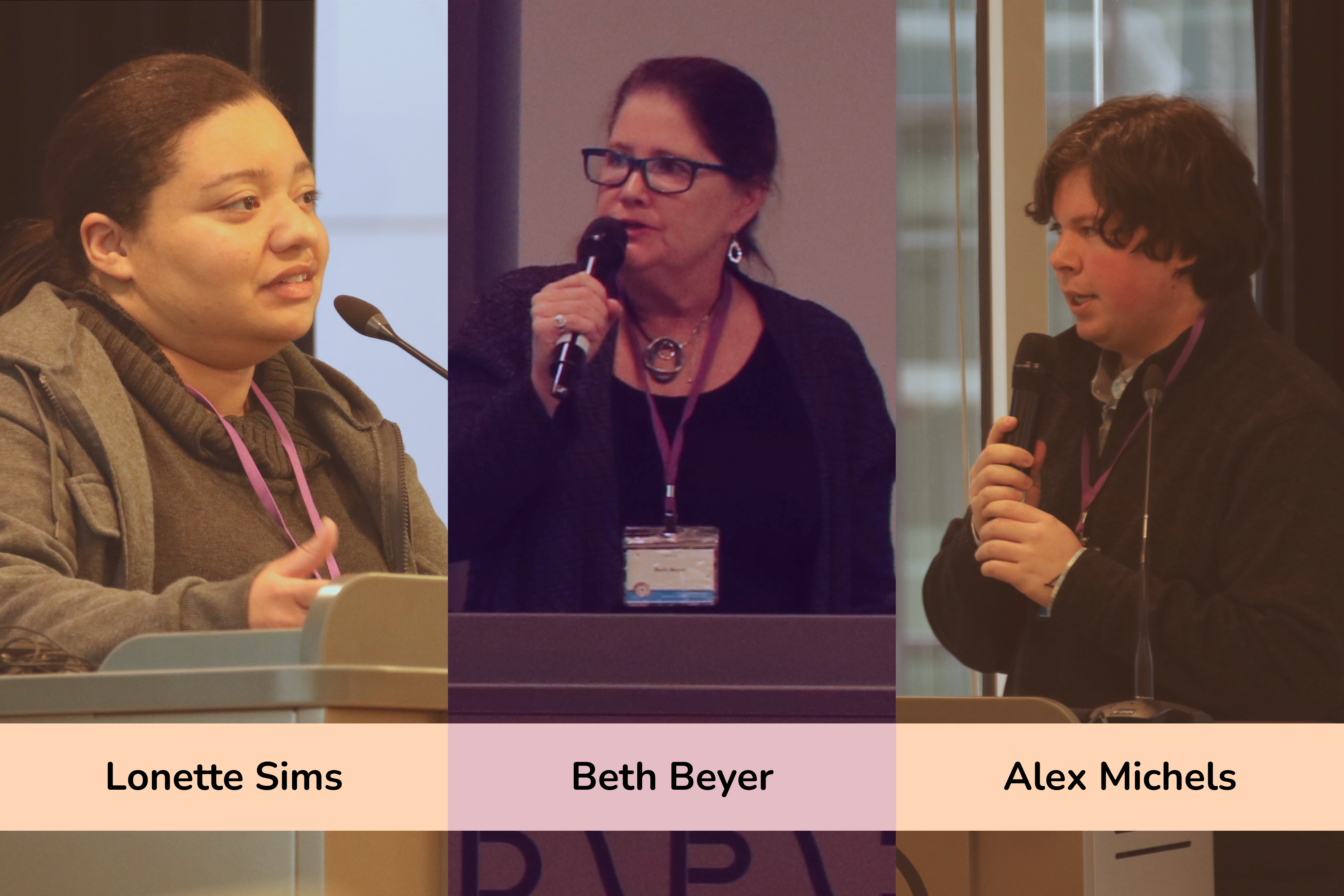Building a Community Centered in SDOH & Place
The End of Year Celebration as it Occurred
On December 14th, in Chicago, the SDOH & Place Project End of Year Celebration highlighted the growing community's unique and insightful work and new approaches in addressing social determinants of health and place-based inequities. The Fall 2024 SDOH & Place Community Fellows showcased the web applications they developed to better serve their communities, and community and health leaders joined to share progress in moving the needle on health outcomes, SDOH, and Place — and how we talk about the data central to all these processes.
⠀

The celebration was a delightful and well-deserved way to end the year, providing an opportunity for people to share ideas and stories regarding their communities, and a way to celebrate the first full year of the SDOH & Place Project going live. If you’d like to view the recording of the event, you can watch the full live-stream on YouTube. We want to give a big “thank you” to our speakers for their contributions:
- Alexander Michels - University of Illinois Urbana-Champaign: Spatial Accessibility with Machine-Learned Driving Times
- Beth Beyer - The Technology Alliance: Hope, Education, Art (HEATChicago)
- Sonia Monet Saxon - University of Illinois Chicago: Lived Experiences of Air Pollution in McKinley Park, Chicago
- Latrice Landry - University of Pennsylvania; Department of Genetics: Structural Racism Identification and Vulnerability Evaluation (StRIVE) Story Maps
- Marc Astacio-Palmer - University of Illinois Urbana-Champaign: Social Media Module
- Lonette Sims - The Chicago People’s Response Network (PRN): SDOH & Place Fellowship Project
- Dulce Garduño - The Chicago People’s Response Network (PRN): SDOH & Place Fellowship Project
- Elijah Griggs - The Chicago People’s Response Network (PRN): SDOH & Place Fellowship Project
- Alonso Vidal - Mujeres por Espacios Verdes: SDOH & Place Fellowship Project
- Jamie Seo, Sasha Adkins & Delia Barajas - Voces Fieles Comunitarias Contra la Opresión: SDOH & Place Fellowship Project
We would also like to give a special shoutout to our speakers who could not attend:
- Johnny Reyes - Voces Fieles Comunitarias Contra la Opresión: SDOH & Place Fellowship Project
- Arturo Galan, Carina Gutierrez, & Evelyn Barragan - Instituto Del Progreso Latino: SDOH & Place Fellowship Project
Jose Alavez, an accomplished post-doc from the Healthy Regions and Policies Lab, kicked off the proceedings by welcoming everyone to the symposium. Especially, making a point to note that this is less of a traditional symposium or conference, and more of a celebration to allow everyone to come together, share their insightful projects, and take pride in the achievements of everyone in attendance. After the warm introduction, he led us into the agenda and started the celebration on a positive, upbeat note.
⠀

Next, Alex Michels, from the University of Illinois at Urbana-Champaign, presented a high-level project regarding spatial accessibility and the calculation of catchment areas regarding improving measures of accessibility.
After that, Beth Beyer, from the Technology Alliance, presented an extremely thoughtful and informational map, HEATChicago, where art and inclusive green spaces accessible to the community are the main priority. The elements of HEAT include highlighting gathering spaces for the community, the Chicago Tree Project, Chicago sculpture exhibits, and gardens
Next, Sonia Saxon, from the University of Illinois Chicago, details the lived experiences of bad air quality in McKinley Park, Chicago. Sonia’s presentation included an interactive map that shows the distance from MAT Asphalt to the closest schools and residents, a lived experience story map, a map of 311 air pollution complaint frequency, and other factors. A powerful part of Sonia’s presentation came in the reading and displaying of a content cloud highlighting words that the community used when describing what their lives are like by the asphalt plant. Words like burning, lungs, and odor occurred the most, showing the power of collaboration and the impact that shared experiences can have in raising an issue and affecting change for the better.
Our final talk of the morning was from Latrice Landry, Instructor at the Perelman School of Medicine at the University of Pennsylvania, joining us over zoom to present her project: Structural Racism Identification and Vulnerability Evaluation (StRIVE) Story Maps.This project created a space for members of the community to come together and share stories of how they felt within their community.
⠀

During our lunch time, Marc Astacio-Palmer, of the University of Illinois, and the Healthy Regions and Policies Lab presented an an updated version of our SDOH & Place Dissemination Module (update to come soon!), detailing various ways people may interact with you online, and what to do if the interaction becomes malicious or harmful. As more and more of our lives become digital, it is important to know what options one has concerning online safety.
After lunch, we moved on to the Fall Community SDOH & Place Fellowship projects. In this second cohort, we invited local community organizations to go through the Toolkit in the same way the SDOH & Place Fellows 2024 Cohort did to create web mapping applications for their communities. Up first, was Voces Fieles Comunitarias Contra la Opresión represented by SDOH & Place Fellowship Ambassador Jamie Seo, Sasha Adkins & Delia Barajas, showcasing their project of what this cohort nicknamed a “reverse-asset map”. Instead of this Asset Map mapping local assets and resources for the community, this application mapped pollution samples in neighborhoods around Chicago with notable community centers to visualize which parts of the community were most affected by pollution. Johnny Reyes, another Ambassador of the SDOH & Place Fellowship, was unable to attend, but his story map implementation was introduced by the Voces team at this celebration to bring the voices of the community to this map.
Up next Lonette Sims, Chairwoman of the Chicago People’s Response Network, presenting her SDOH & Place Fellowship project: a Heat Map for Pilsen. This asset map shows current and potential locations (e.g., libraries, senior buildings, cooling centers) that can help this neighborhood combat heat and climate change.
⠀

Dulce Garduño’s presentation followed, making a case for centering migrants in any discussions on SDOH & Place. Dulce—a graphic designer and immigrant herself— serves as the Pilsen Alliance treasurer, organizes a tree-planting campaign, volunteers for the homeless, and hosts the radio show “Palabras de Vida” in Chicago. She is also a co-designer of ChiVes, and helped coordinate multiple environmental justice workshops to expand the application earlier this year.
Elijah Griggs was up next, a student representive part of the Chicago People’s Response Network, presenting his story map, “To Shelter or Not to Shelter,” whicyh explores the need for sheltered bus stops in Gage Park (Elijah’s community) to protect public transport commuters against extreme weather.
Last, but certainly not least, was Alonso Vidal representing Mujeres por Espacios Verdes. His SDOH & Place Project titled “Aqui mi arbol” is a story map related to the importance of green spaces and community gardens in Chicago. This story map showcased video accounts from members of his local community within Chicago on the need for more green spaces.
We would also like to recognize Arturo Galan, Carina Gutierrez, & Evelyn Barragan, who also completed the SDOH & Place Coommunity Fellwoship program, but were unable to attend this event. This group were representatives of the Chicago community organization known as Insituto del Progresso Latino an organization that helps to contribute to the fullest development of Latino immigrants and their families through education, training and employment. Together, they created two asset maps to share local resources to support their members.
⠀

The SDOH & Place Projects Fellowship's recent event highlighted the program's success in empowering communities to use data for health equity. Fellows presented impactful projects, demonstrating how mapping technology can address social determinants of health. The event fostered collaboration and reinforced the Fellowship's commitment to data-driven community solutions.












